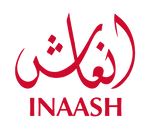Palestinian Embroidery: Tradition Renewed
By MIFTAH
The art of embroidery is one common to many cultures around the world. But Palestinian embroidery is unique not only for its striking (and almost exclusively) red and black intricate patterns, but also for its cultural and social meaning. Once a traditional craft practiced only by village women, Palestinian embroidery has taken on new meaning as an artful expression of Palestinian identity.
The traditional Palestinian dress, or thoub, is notable for its exceptional embroidered designs, which appear in panels on the chest, sides, sleeves, and at the hem. The block of embroidery on the chest is the main attraction of these dresses, and it is said to protect the wearer from evil, bad lack, and poor health. The thoub is made by stitching each panel individually first, and then sewing them all together into the final product.
Also notable for the fact that it mainly uses just one stitch, Palestinian embroidery is differentiated by its pattern, and patterns vary by region. In other words, a pattern from Bethlehem differs from that of Jerusalem and Gaza, and so on. Therefore, the home town of a Palestinian woman could be identified simply by the pattern on her dress. Commonly, the patterns are geometrical, but they may also include images such as flowers, trees, or houses, among others.
Like so many other things in Palestine, women’s embroidery has been affected by politics. For example, before 1948, most women who embroidered were from the villages. After 1948, it became a luxury available only to the wealthy. Another politically motivated change to the craft came after 1967, since which time images such as the Palestinian flag, Jerusalem, and the Dome of the Rock began to appear in embroidery.
No less than 500 years old, the art of Palestinian embroidery lives on today. Taking on new meaning, the craft has morphed from one that signified a woman’s village identity to a cultural expression of Palestinian identity. Moreover, today Palestinian women embroider dresses and other articles of clothing or accessories in the traditional style not only in an effort to keep the long-standing tradition alive, but also as a means of economic subsistence. For women facing restriction of movement imposed by the Israeli military, work that can be done in the home is vital, and embroidery fits that bill.
Less popular among women today is the thoub, so the spirit of traditional Palestinian embroidery lives on in contemporary items such as shawls, table cloths, pillow cases, and other household objects, which are often produced by women’s cooperatives, and sold both locally and abroad.
Date posted: August 01, 2003
